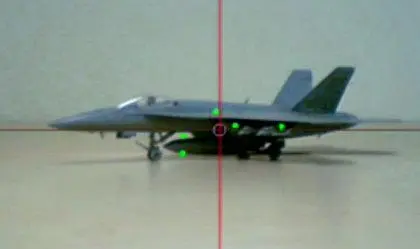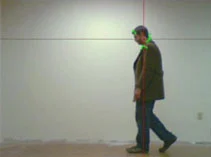Machine Vision, Robotics, AI
 |
 |
Figure: Autonomous tracking of an F18 model (left) and and individual (right)
Emerging technological challenges in automation and robotics are a perfect fit for the core capabilities of TA. Research and development in optical sensors, sensor fusion algorithms, robot behavior algorithms, navigation, and path planning are active and ongoing at TA.
In the field of machine vision, TA has unique expertise in applying the OpenCV open-source machine vision libraries that is central to machine vision and AI research at Stanford, MIT and elsewhere. OpenCV provides a rapid, modular toolkit for building complex machine vision capabilities such as pose-invariant object recognition, quantitative stereo vision ranging, vertex tracking, all of which TA has successfully demonstrated in a military environment. TA has built customized development software tools to combine and optimize multi-node image processing chains. In addition, TA’s 3D simulation capabilities have been exercised to provide evaluation and training data in complex environments such as aircraft carrier flight decks.
In robotics, TA has been a subcontractor on PSI’s flightdeck robotics programs, providing mechanical design of propulsion and actuation systems, sensor development and testing, and control software. TA led field testing of the resulting robotic system at the Lakehurst Naval Air Station, where recognition, approach, and docking with an actual F-18 was shown. The prototype robot to achieve this was built entirely on TA premises from TA designs. A novel motor and linkage system was developed by TA to autonomously deploy and energize magnetic wheel chocks around the aircraft landing gear. In other projects TA led a successful effort to refurbish the robotic arm used in a robotic bottling system for Velcon Filters. Additionally, TA principals Michael White and Christopher Templeman developed and field tested a mobile robot for automating labor-intensive measurements during overhaul procedures for aircraft carrier steam catapults.
While the theoretical vagaries of artificial intelligence may be best left as the domain of academicians, TA is working in the forefront of robotic behavior algorithms to achieve useful emergent behaviors, path planning, obstacle avoidance, and problem solving in robotic systems. This pursuit has led TA to develop robot control algorithms using a “behavioral robotics” paradigm supported by industry-recognized tools such as Player/Stage and Linux operating systems.
